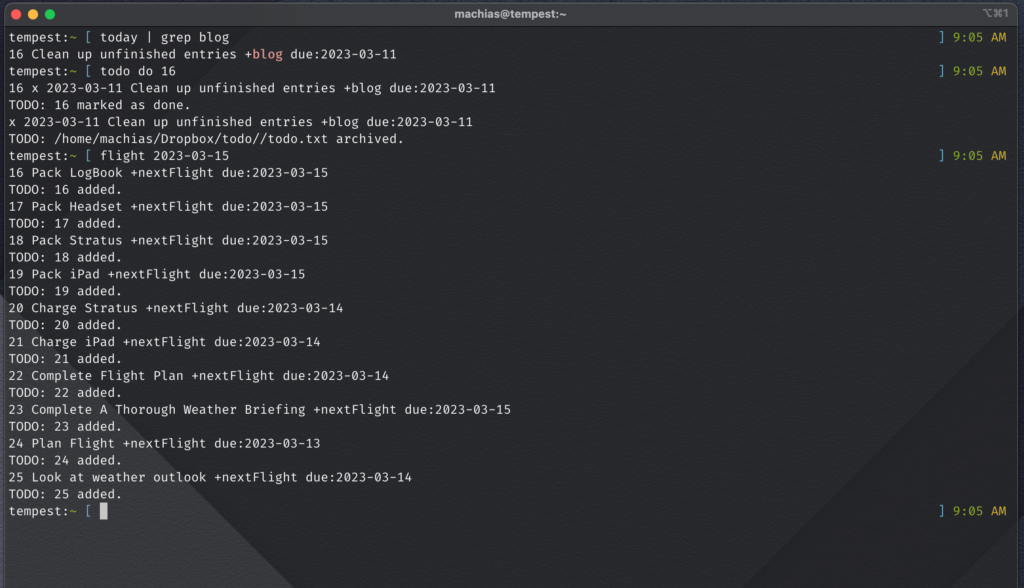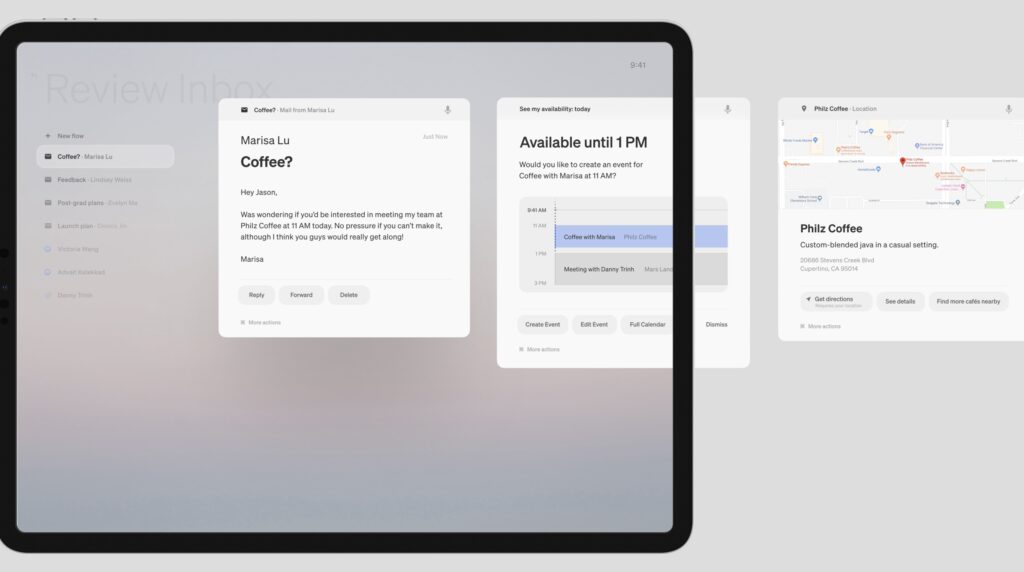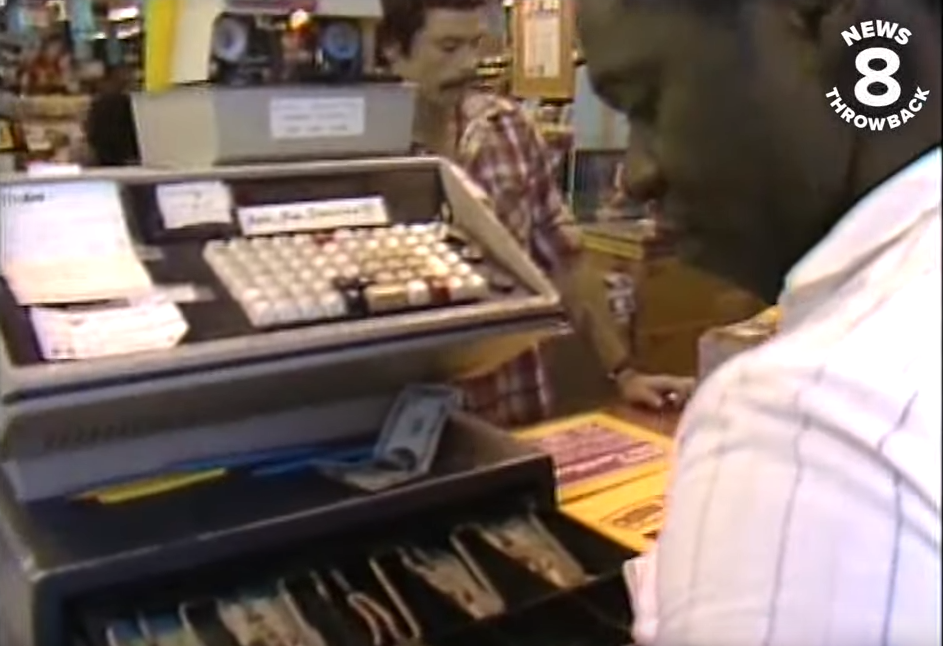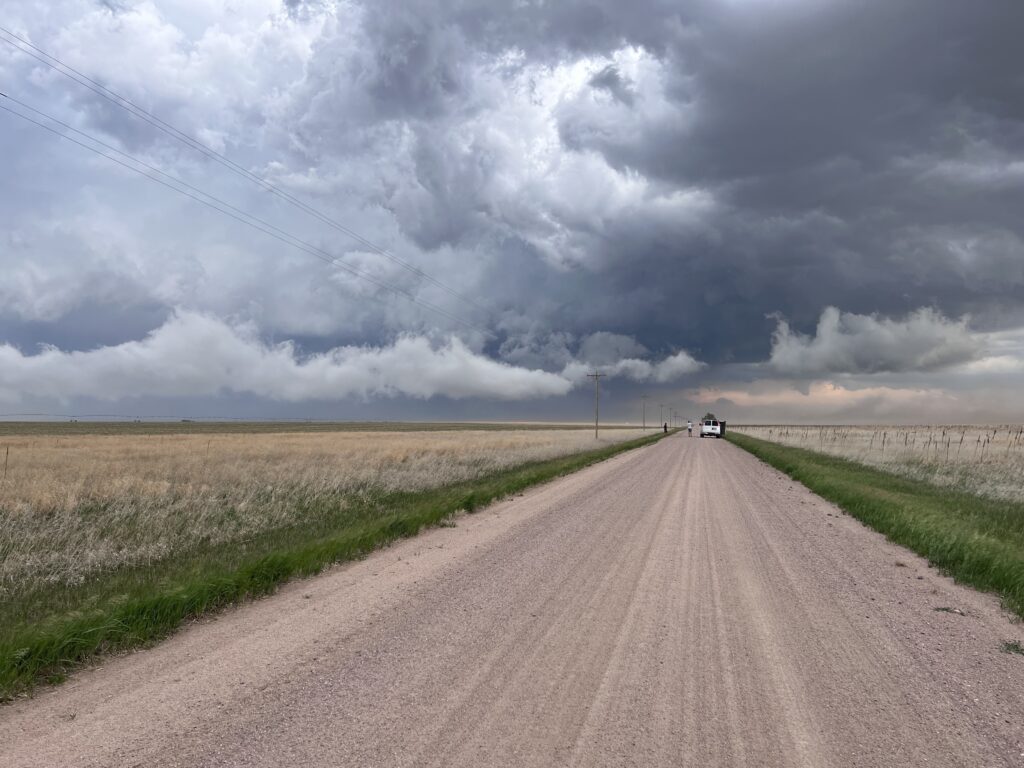This is a test post from a new blogging application.
I’m uploading a photo of a B747 flying over the house. It was using call sign ABIDE9

This is a test post from a new blogging application.
I’m uploading a photo of a B747 flying over the house. It was using call sign ABIDE9

I mentioned last week that I had found a solution for my cross-platform app management, specifically around my personal journaling habits (Day One) and task management (OmniFocus). With both of these traditionally Apple-only applications having web interfaces, it was now easy to keep using them because I could still get to the data from my Linux computers.
Day One continues to be brilliant for me and it’s helped me sort out thoughts, reminisce about things that have happened in the past, and in general continues to bring me delight.
OmniFocus is another matter. While I’ve used OmniFocus on and off over the years, I always end up feeling like the application and/or processes are just too complex for my needs.
I’m a simple guy. I maintain a todo list so I don’t forget to do things. I’ll have a brilliant thought while out for a walk or falling asleep and I have to write it down or else I’ll forget it in five minutes. I can remember every room and associated schedule from high school but I can’t remember what I recalled five minutes ago to tell my team at work. So todo lists are important to me.
So, I’m back to “Plain Text Productivity” using todo.txt. I maintain two todo lists, one for my personal tasks and one for work. Every morning, when I sit down at my computer to work for the day, I type a buildtasks at the command line on my work-issued Windows computer and the automation builds routine things I need to accomplish for the day and copies anything from my personal list, which is sitting on our home server, marked with +work. It then deletes anything for work from my personal list.
It’s a little clunky but typing that command every day tells my brain, “OK, it’s time to work”.
Because I’m a GenXer that knows life before point and click and because I LOVE retro computing, I love tinkering around on the command line. And because I’m an applications developer, I can write simple scripts to automate the creation of checklists and integrate them into my personal todo list. As a pilot, I like checklists. A lot. My team at work has learned the value of checklists under my leadership.
In this screenshot I’m logged into my home server, looking for anything I’ve tagged with “blog” due today, finishing that task, and then creating a checklist for my next flight.

My “today” command is pretty simple, it’s a shortcut to a longer command that grabs anything in my todo.txt with the current date. Because I have my next flight checklist staggering dates, whenever I look at anything due that day, I’ll see the tasks to prepare for my next flight.
I’ll dive a little more into the scripts I use to augment todo.txt as outlined on the website in a future blog entry. It’s not as robust as point and click or touch and swipe, but it works well for the way I think, and that’s what keeps me on track.

I’ve mentioned many times that one of my rules about choosing programs and services to use in my “computing stack” is that the data has to be available across the board. I refuse to be locked into one ecosystem. If I type a document on my Mac, it has to be easily accessible from my iPad, my Linux machines, and any Windows computer I may have fired up at any given time.
There are two programs/services/needs I have struggled with for years when it comes to this interoperability: task management and my daily journaling habit.
I have maintained a daily journal (outside of this blog) for over a decade. Back in the days when I was all in on Apple I used Day One, which does exactly what it’s suppose to do. It lets me attach photos, I can write an entry in a freeform style or I can build templates and share my thoughts in an organized fashion at the end of the day. I love Day One but it was mostly confined to the Apple ecosystem. If I carried my Linux computer while traveling, I had to journal through the iOS app on my iPhone, which is OK but not a great experience.
I tried moving my journaling habits to Obsidian, but it required a little too much in the way of care and feeding to keep things working the way I like them to work. I kept going back to Day One.
Today I learned Day One is beta testing a web interface. And because I am a premium subscriber (which backs up all of my journal entries in an end-to-end encrypted space), I have access to this beta test. And so far it is wonderful.
Some folks may question using the proprietary Day One format instead of plain-text based Obsidian, but one of the things I like about Day One is that I can easily export my journal entries to plain text. And that’s a beautiful thing.
The other struggle has been around task management. I have kept an electronic to-do list for many years and recently have relied on the todo.txt plain text task management system. I used Dropbox to keep these text files synchronized across my devices. The issue I constantly run into is “version collisions”, for example, is the online version or the version on my iPhone the most up to date? I’ve run into situations where I’ve overwritten important tasks when trying to reconcile versions. This makes me not trust my todo management and then I start worrying that I’m going to forget something important.
OmniFocus is an amazing task management system that I enjoyed for years. The problem with OmniFocus is that it’s traditionally been an Apple based experience. Work requires that I use their standard issue Windows 10 computer. And I’ve been using my Linux machines as my daily drivers for a while now. Luckily, the OmniGroup offers a web interface to OmniFocus and the version currently in testing is pretty much on parity with what their applications offer. Like Day One, it’s easy to export to plain text files, and I can automate that practice so I always have an text-based backup.
Both of these web based solutions meet my “the data can’t be locked into one ecosystem” criteria.
I’m going to give these web based solutions a try for the month of March as part of my on-going “30 day personal growth” challenge I try to embark on every month.
On the plus side, using these subscription based web interfaces also will save me money, as both are cheaper per year than the former counterparts I was using. So, while I’m saving money with software subscription costs, I’m also able to use older Linux-based computers that can be repaired and upgraded to keep up with the times instead of forced obsolescence that we often see with Apple products.
Win win is always a great thing.
I was playing around with the webcam in my resurrected Lenovo ThinkPad T460s the other day. Here’s a selfie taken with this computer running Pop!_OS. I used the Cheese application.
The result has a slight “Lucille Ball in ‘Mame’” Vaseline on the camera lens haze to it.

I have mentioned before that I constantly have a “technological battle” going on in my head. Because I’m such a diehard geek, I’m always analyzing and comparing and contrasting what setup around technology works best for me. Do I want to go full blown geek and stick to Linux? Is the fit and finish* of relying on Apple products helping to reduce friction in my life? Can I find what I’m looking for? Do I find my color selections on pleasing?
This is a constant struggle in my head and if I dwell too much on these things I start to lose things, things like documents and my to do lists and the like.
I’m trying to reign this in, but there is no one, complete solution for any of this. I favor using Linux for everything but it needs more care and feeding than I sometimes want to give it. Apple products lean towards locking my data into Apple and that’s it and that bothers me. I haven’t really been interested in Windows in a long while but I suppose that’s an option.
I know this is a first world problem. With the way my brain is wired it takes way too much of my bandwidth. I’ve been obsessed with these things for years. I need to figure out how to bring it in.
Dear Apple,
Six Colors and other Apple aficionados are releasing their 2022 “Report Cards” for where they see Apple as of 2022. These report cards are very interesting and I look forward to reading them everywhere. I don’t use the commentary to sway my opinion, nor reaffirm my opinion, but I do often agree with the assessments presented.
I am typing this blog entry on my M1 iPad Pro. I would like this device to be my main computing device. I want a Star Trek experience where I can take this device anywhere, work with it as a tablet or connected to the Magic Keyboard, or plug it into a keyboard and monitor setup, and be productive on this device. I don’t need it to run MacOS, because that would be continuing the same old paradigm. But I have to admit, I’m really confused as to what you want this device to do.
The M1 (and new M2) processor is the same exact processor in your Mac lineups. My M1 Mac Mini is absolutely amazing. It has been a workhorse since I purchased it in 2020 and easily handled my work at home needs without even getting warm, let alone breaking a sweat. The M1 (and now M2) processors are amazing and you should be commended on this advancement.
So why do you stifle your iPad Pro lineup so much by restricting this beautiful device to iPadOS?
Let’s face it, Stage Manager in iPadOS 16 is a mess. It’s not intuitive, it’s buggy, and it’s too restricted for power users and too complicated for normal users. When I fire up my iPad Pro I don’t want to see a bigger version of my iPhone, I want to Think Different.
The iPad Pro, in the focus of your company with billions and billions and billions of dollars in the bank, should have a completely different experience than both your iPhone and Mac line ups. The iPad Pro deserves to stand on its own and deserves to bring a new paradigm of desktop computing front and center.

For a few years now I’ve mentioned MercuryOS from time to time. A brilliant concept by people smarter than me, MercuryOS is designed for tablets exactly like the iPad Pro. The concept shows a new, intuitive interface for computing, powered by the likes of AI we see today with Siri. MercuryOS is gentle, elegant, and designed to bring users into a state of “flow”. Flow is good. Flow on an iPadPro would be a godsend.
Please, hire the people that built the concept of MercuryOS. I know you have the technology today to make these things happen. We all know that if any company in the world has the capital to pull this off, it’s Apple.
We have spent well over a decade waiting for the next step in computing. We have waited for well over a decade for the next giant leap in the user experience. We have the devices, we have the technology, and the cash to make it happen is there.
Please give us the next big thing.
(I am in no way associated or involved with the folks at MercuryOS. I am just a really big fan).
Cross-posted from Facebook.
Hello family and friends. This is a free IT security consultation.
Please make sure you’re using a secure password and two-factor authentication (2FA) here on Facebook (actually everywhere). Today I’m receiving messages from folks saying they found photos of me on TikTok and the provided link goes to a scam website. For what it’s worth, I’m not on TikTok.
Your password should look something like this: B@c0n3ggs!zzXaYum!yuM with random characters mingled with something you can remember, or something completely random stored in a password manager like what’s built into both iPhone or Android or in an app like 1Password or Bitwarden. Two-factor authentication is when you either grab a code of an app on your phone or get a code sent to you. I’ve included a link describing 2FA. I use a free app called Authy.
It pains me to see the Internet continue to be such a potentially dangerous place with scams and leaks and lost data and impersonation and the like. The Internet was suppose to enrich our lives, not endanger it. Safe surfing!
Twitter finally announced they will no longer allow third party applications to access the service. So for the thousands of people that used applications like Twitterrific or Tweetbot to access their Twitter accounts you’re out of luck. If you want to continue using Twitter, and I don’t know why you would want to but that’s another rant, you must use the official Twitter app. Historically I have found later versions of the official app overwhelming with ads and weird timelines and of course the ridiculous algorithm that tells me what to see instead of just a reverse-chronologically ordered timeline. Today’s Twitter is designed to engage, enrage, engage some more, and enrage some more in what they hope will be an infinite loop of visits, thus securing revenue by forcing you to see their ads while you’re seething in between tweets from Marjorie Taylor Greene and her ilk when you’re just looking for pics of naked men and/or cats.
A few links explaining how awful (actually how much of a dick) Twitter was with the handling of this transition.
From IconFactory, the creators of Twitterrific.
And finally, a good hint as to why Twitter is starting to sweat ad revenue a little more. Elon Musk is REALLY killing the already questionably solvent business with his antics.
As a quick aside, Tesla’s stock price has been dropping like a stone since Elon Musk’s focus on Twitter. Stock holders are not happy.
It’s a quiet day here in the Desert Compound. My husband is watching football (his second game today), the dogs are sleeping near my feet, Truman is sleeping in his cat tree, and the rest of the family has gone on a movie date to see 3 1/2 hours of Avatar.
I’m enjoying the relative downtime.
I’ve been using this quiet time to clean up my computing experience a little bit. I’m always tweaking my setup here and there. I’m determined to not buy any new computers in 2023 and 15 days in I’m still holding to my word. I don’t need a new computer, of course, but once in a while I think about buying something to use at work as part of their “Bring Your Own Device” program. I have a cantankerous relationship with my work-issued, Windows 10-based laptop at best, but when all is said and done it gets the job done and that’s what’s important. I just need to take a focused approach at using the dang thing so I don’t get into my own head about buying another computer.
I’ve also been using the quiet time to engage in some of my hobbies. I’ve been watching flying videos, chatting with other pilots of aviation forums, and looking into some other flight opportunities in the area. The weather for the next 48 hours is rainy, cloudy, and cold, so I might as well engage in my aviator blood through other methods.
I’m also doing more research and planning for Storm Chasing Trip 2023 coming up later this spring. I’ve been looking at maps and the like, figuring out some key places I want to visit should I run into any downtime between storms.
And if that’s not enough, I’ve also been doing some research on my vintage point of sale systems hobby site. I found a video focused on John Lennon’s death and the impact on a local Tower Records back in 1980. It was quite interesting in itself, but I also noticed the Data Terminal Systems cash register featured in the video. It’s been over nearly four decades since these cash registers were in the mainstream, and they probably populate too many landfills, but I still hold out hope that someday I’ll find a unit I can clean up and restore for my own amusement.


Even though it’s the beginning of January and my 2023 storm chasing trip is scheduled for mid May, I’m already excited about the whole affair.
With Twitter going completely sideways since Elon Musk’s purchase of the platform, I’m remembering how dependent I was on the service last year when it came to seeing what other storm chasers were up to. There are plenty of other data sources to see where storm chasers are located. I belong to the Spotter’s Network and I track other sources through various apps, including RadarScope. But Twitter was incredibly convenient for incoming data. While my two remaining Twitter accounts remain dormant, I’ll probably fire up my aviation and storm chasing account when we get closer to traditional chase season, even if I just use it for monitoring and following. That is if Twitter is still around and people are actually using it. I keep hearing about tons of folks leaving the platform.
There’s always Facebook for this information as well, but with its kooky algorithms I’m left with a feed of a bit of storm chasing information, a bunch of ads trying to sell me shaving cream or beard balm, lovely pictures of friends’ cats, and then an ad for a politician I have no interest in.
Today’s popular Internet services are not really designed for those that need a focused data stream. And let’s face it, we all need a more focused data stream.